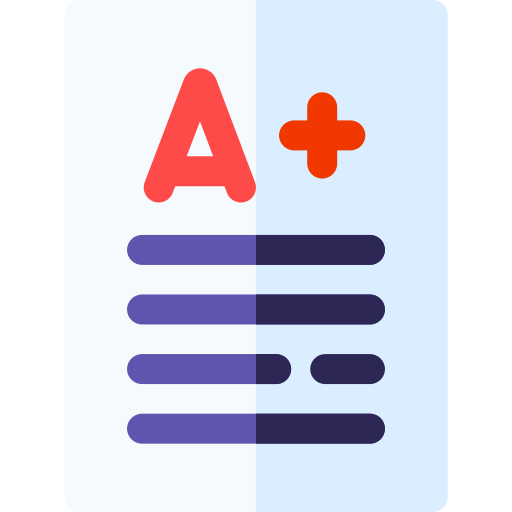دليل المعلم Teacher Edition Volume 2 الرياضيات الصف العاشر منهج انجليزي الفصل الأول
Standards for Mathematical Practice
This shows he aEg-ment of Wth Intevated to the Stmd&ds fu Mathematical Pracice
Standard
1 Make sense of problems in solving them
Mathematicauy prff•cient students start explaining to themselves meaning a probem and entry to its sdutim_ They u-.alyze givens. cmstraints. reatimships. and pals. They make cmjectures the for"
and meming Of the and plan a sohmn pathway than junpmg a sdLmn attern* Trey consider pr±lems. and try cases and sirnpler forms of the mgind problem in to Eight into its sdution. They moMor and ealuate their md couse if necessary. students might dependng on the context of the prouem. algebraic expressions or me viewing window their graphing to the they ned. Mathematicy proficient cm explail equatims. verbd descrons. tles. and yaphs or draw dgams irnwtmt features and relationshs data. and search for trends. students rew on using concrete o*ts or pictues to he' p conceptudize md seve a problem. Mathernaticdly students check their answers to prouems using a I different method, and they cmtinualty ask themselæs, -Dæs this sense?- They can understand ttk of mhers to solving complex problems and identify different apmoaches
Maffem Ricany pr«vcient students make sense of qumtities and he" relatimships in snuaims They brig two cmWementay abdities to on m±lems involving quutitatjve relaimship_ he to decontextudize—to abstract a given situn æ-.d represent it and manipulate the representing synms as if they have a life theü without necessuiy attendng to the" referents—md the to cmtextLdQe. to as needed during the manu ation prxess in to into the referenE tie synMs Quantitative entals habts of creating a coherent representation of the moblem at haM. units invd.« attenng to the meanhg of wanüties. just how to compute them fkxbly using dtferent proßrties of and
Construct viable argumerts and critique the reasoring of others
Mathematicalty proficient understand and use stated assumpt.s. md meviousJy resuts in constructing arguments. They rne conjectures blild a ica of statements to exwe the truth of their cmjectures. They are awe to analyze situations by breaking them into cases, Mid cm recvåze I md use canterexamples. They justify he' conclusims. cunnuricate them to others. to the arguments ot others. They reason inåjctively data, making plausible arguments that take into accumt the cmtext from which he data Nose. Mathematicdly proficient students Me also to he efftiveness two gausble arguments, Ostingish correct logic reasoring from that which is flawed, md—if there is a flaw an what Elementary sÜdents cm cmstruct arguments ushg concrete referents such as drawhgs. diaguns. and actims. Such arguments can make sense and even thou they Me not generalized formal unti IMer Later, students leam to deterrnü.e dura'ls to which an arwnent applies. Students at all gades can listen or read the arguments others, whether they make sense, md ask useful westims to clarty or improve he arwnents
Maffematically proficient stunts cm the mathematics they know to solve problems arising everyday Me. s«iety, and ttw In euty tris rnit be as as wrthg equation to a situaion. In miMle grades. a student mi$lt reasoning to plan a schod event or analyze a problem in the community. By high schml. a student might use geanetry to sdve a design probem use a function to how me quantity of interest depends another. Mathematically proficient students who can apply what they know are making assumptions to simplify a snuafim
redizing that these may revision later. They abe to identity imprtant quantities in a practical stuatjm md map their relationsh$s using such as dagrams, two-way tables. graphs. and formulas. They
cm andyze those relationshs matematically to faw cmclusims. They rwtinety interpret their rnathematical in tte context the situatim and reflt on whether he results make sense, possbly in-voving the
Standard
5 Use appropriate tools strategicany
Mathematically proficient students consider the available twis when sdvülg a mathematical problem. These tods might nclude pend and concrete models, a ruler, a protractor, a caculator. a spreadsheet. a computer system, a statistical cnamic geometry software. Proficient students Me sufficiently familiar with tools appropriate for their grade or course to make sound d«isions about when each Of these might
be helpful. the insight to be gained and their limitations. For example. mathematically proficient high school students analyze graphs of functions and solutions generated using a graphing They detect possble errors by using estimation and other mathematical knowledw When making mathematical models. they know that cm enaNe them to visualize the results Of varying assumptions. explore
consequences. and compare with data. Mathematically proficient students at various grade levels Me able to relevant external mathematical resources, such as digital content on a website, and use them to pose or solve problems. They are able to use techno@cal tcx.ls to explore and their understanding of concepts
Mathematically proficient students try to communicate prKisety to others. They try to use clear definitions dscussion with others and in their own reasming. They state the meaning of the symbols they induding usmg the equal sign consistently and They are careful about units Of measure. and axes to clarify the correspondence with quantities in a problem. They calculate and efficiently,
express numera answers with a degree of precision appropriate for the problem In the elementary students give carefully formulated explanations to each other By the time they reach high schc they have
learned to examine dams and make explicit use of definitions
The Ignite! activities. by Dr. Raj Shah, cultivate curiosity and md challenge students- Use these Ixated online in the Launch section, to your to a growth mindset tmvards mathematics and probern solvirA Use the notes for inplementation suggestions md for encouragülg
Q Essential Question
At the end of this module, stuld be able to answer the Essential Question
How are real-worw situatims involving that grow or dedine rapidly mathematicdly? Sample answer: Quantities that rapidy are modeled by exponential yowth functions, and quantities that dedine rapidly are by exponential functions
What Will You Learn
Prior to tis motile. have ymr rate their knoWedge of item listed. Then, at the end of the module, you will reminded to have your students return to these pages to rate tier They stuld see that their knowle and skills have increased
DINAH ZIKE
Fxus As students work throul the lessms in this they write notes exponential functions and relations
Texh Have students rne and one of their Foldable for every two lessons in the module and use the appropriate as they cover the material Have students list the Key Cmcepts and the terms and their in their Foldable. Point out that the Foldable can also be used to positive and negative
experiences durülg learning
When to Use It Encourage students to add to their Foldable as they. work throu$ the module and to use them to review for the module test
Launch the Module
this module. the Launch the video uses humm. insect and virus populations to show real-wld applications of functims. Students learn out using exponential relationships to the gal population over tine and vial over tune




